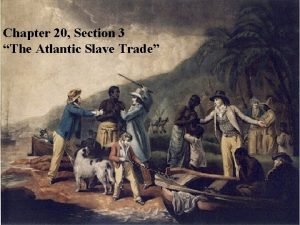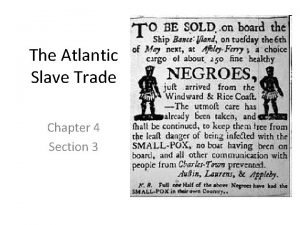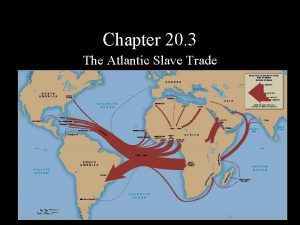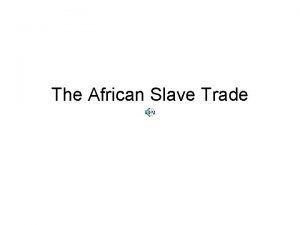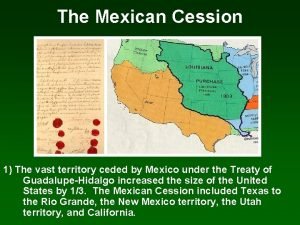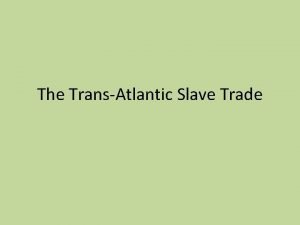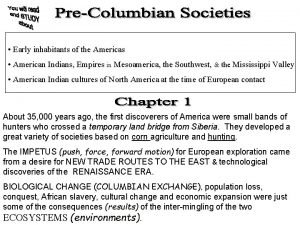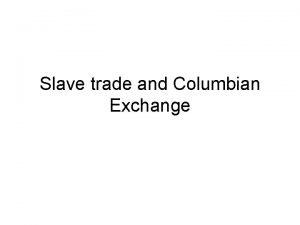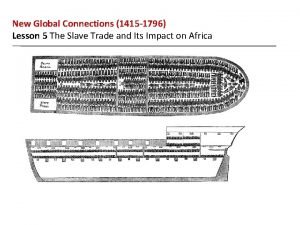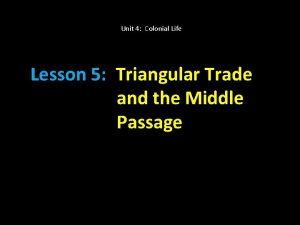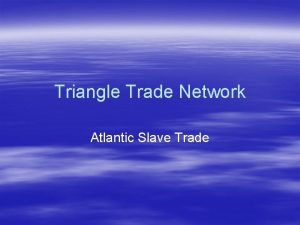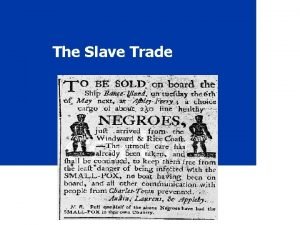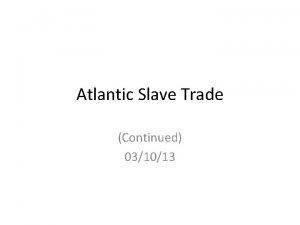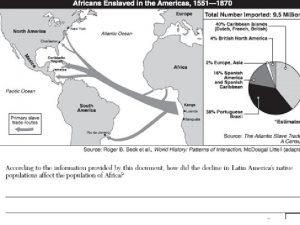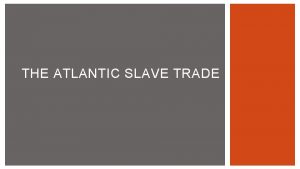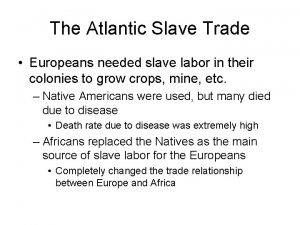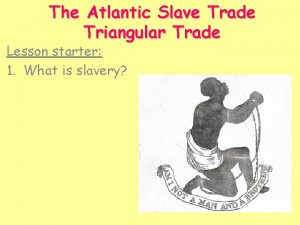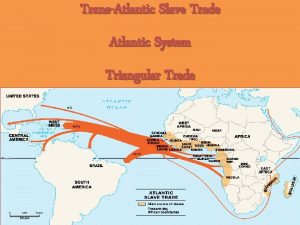The Atlantic Slave Trade Chapter 4 Section 3














- Slides: 14

The Atlantic Slave Trade Chapter 4 Section 3

I. The Causes of African Slavery A. Simple reasons • 1. mass amounts of Native deaths due to disease and warfare forced landowners to look for a cheap source of labor • 2. The demand for cheap labor became a necessity to continue the success of the cash crops of tobacco and sugar

B. Slavery in Africa • 2. As a result between 600 -1600 17 million Africans were transported by Muslims to North Africa and Southwest Asia

B. Slavery in Africa • 3. African slaves did possess some rights and could escape bondage in numerous ways: marrying in the family they served or becoming a general

C. The Demand for Africans 1. There were three advantages: a) had immunities to European diseases b) experience in farming c) Impossible to escape new land

C. The Demand for Africans • 2. The Atlantic Slave Trade brought over 300, 000 between 1500 -1600; 1600 -1700 1. 3 million arrived; and in 1870 when the Atlantic Slave Trade ended 9. 5 million Africans had been transported to the Americas

D. Spain and Portugal Lead the Way • 1. Spain was first to maintain a large amount of slave labor in order to mine for gold and silver and work their plantations: 300, 000 slaves were brought over by 1650 • 2. Portugal surpassed Spain in Slave labor to maintain their sugar fields in Brazil; over 40 percent of all slaves in the 17 th century were sent to Brazil

II. Slavery Spreads Throughout the Americas A. England Dominates the Slave Trade • 1. As England’s presence grew in colonies it began to dominate the slave trade transporting nearly 1. 7 million by the time England abolished the trade in 1807

A. England Dominates the Slave Trade • 2. 400, 000 slaves were brought to North America beginning in the late 1600 s and by 1830 there were roughly 2 million slaves living in the United States.

B. African Cooperation and Resistance • 1. African rulers living by the coast would travel inland capturing neighboring African tribesmen and women and trade them into slavery with European Merchants

B. African Cooperation and Resistance • 2. Some began to protest and denounce the practice but it continued because of the tremendous profit that could be made

III A forced Journey A. The Triangular Trade • 1. Triangular Trade-Europeans sent goods to the African coast. There the goods were traded for slaves. Then the slaves were sent and sold in the Americas. The merchants then brought back merchandise from the Americas

B. The Middle Passage • 1. The Middle Passage-was the voyage from Africa to either South or North America. It was the middle leg of the trip

B. The Middle Passage • 2. On board Africans were sent to the dark holdings of the boat and were subjected to disease, beatings, and death; scholars estimate that 20 percent of the slaves died on the trip
 Chapter 20 section 3 the atlantic slave trade answer key
Chapter 20 section 3 the atlantic slave trade answer key Chapter 4 section 3 the atlantic slave trade
Chapter 4 section 3 the atlantic slave trade The atlantic slave trade chapter 20 section 3
The atlantic slave trade chapter 20 section 3 Atlantic slave trade
Atlantic slave trade Triangle trade map
Triangle trade map The age of exploration outcome the atlantic slave trade
The age of exploration outcome the atlantic slave trade The age of exploration outcome the atlantic slave trade
The age of exploration outcome the atlantic slave trade Washington dc slave trade
Washington dc slave trade Transatlantic slave trade pictures
Transatlantic slave trade pictures What god
What god Transatlantic trade apush
Transatlantic trade apush The transatlantic slave trade
The transatlantic slave trade Lesson 5 the slave trade and its impact on africa
Lesson 5 the slave trade and its impact on africa Slave trade primary sources
Slave trade primary sources Slave trade triangle
Slave trade triangle
